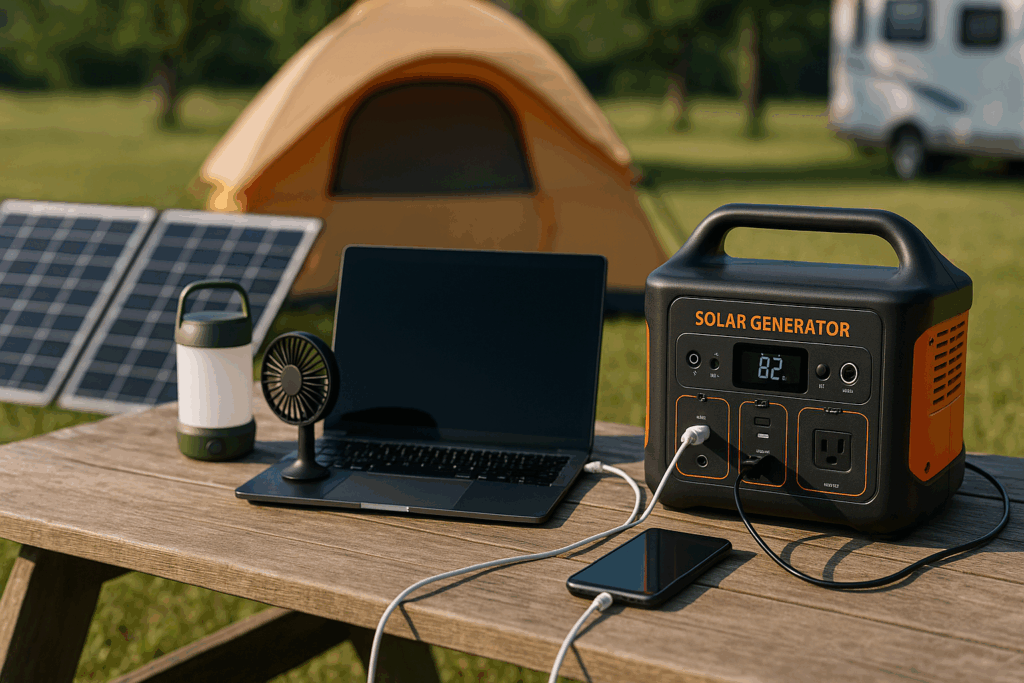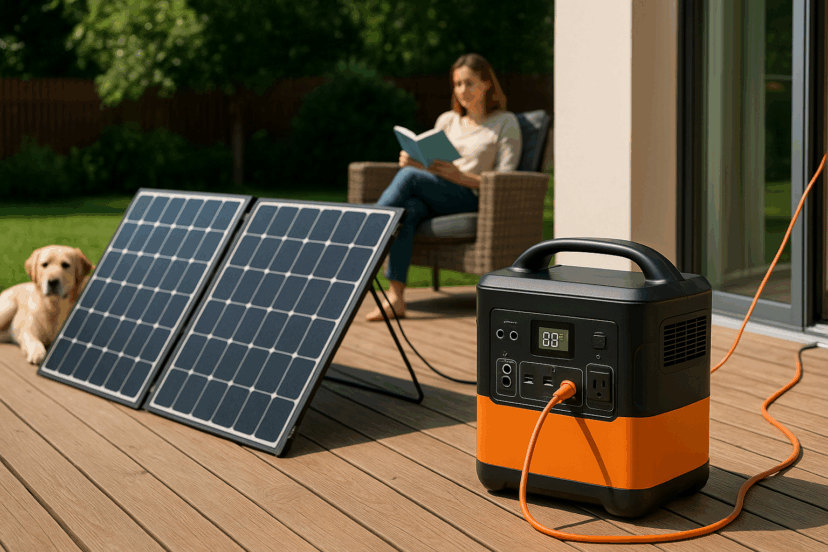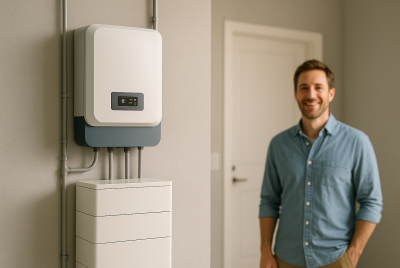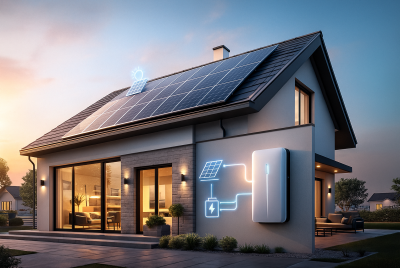5 Best Solar Generators for Emergency Preparedness
Power outages are happening more frequently, and you never know when the next blackout will hit. If you want real peace of mind, solar generators have quickly become a must-have for emergency preparedness. Unlike gas generators, solar generators are clean, quiet, and low-maintenance. They’re ideal for anyone who wants to keep phones charged, lights on, or medical devices running—without worrying about running out of fuel. As we move through 2025, having a reliable solar generator can turn a stressful blackout into a minor inconvenience, making it an essential part of any home safety plan.
What to Look for in a Solar Generator
Shopping for a solar generator isn’t just about grabbing the biggest battery you can find. Here’s what you should consider before you buy:
- Battery Capacity (Wh/Ah): The higher the capacity, the longer your essentials will run. Think about whether you need to power just your phone and a lamp or if you’ll want to run a fridge or CPAP machine.
- Power Output (Watts): More watts allow you to operate larger appliances or more devices at once.
- Charging Speed: Less downtime results from faster charging. Look for units that recharge quickly, especially via solar.
- Portability: If you’ll be moving the unit or using it for camping too, size and handles matter.
- Expandability: Some solar generators let you add extra batteries or more solar panels for increased capacity.
- Number and Type of Ports: A variety of AC, USB, and DC ports gives you the most flexibility.
- Solar Panel Compatibility: Some generators come bundled with panels, others don’t. If you’re looking for a high-quality solar panel to pair with your generator, check out this 400-watt solar panel option—a powerful choice for emergency and off-grid use.

5 Best Solar Generators for Emergency Preparedness
1. Jackery Explorer 2000 Plus
Why it’s great:
The Jackery Explorer 2000 Plus’s combination of strong power, portability, and easy-to-use controls makes it a popular choice. Using a 2,048Wh battery and producing 2,200W, it can power a refrigerator, lighting, medical equipment, and more. Its touchscreen makes it easy for anyone to use, and it can be charged via a power outlet, a car, or solar panels. Additional battery packs can be added if your needs change. It’s also incredibly light for a device with so much capacity.
Pros:
- Quick, flexible charging
- Runs large devices
- Easy-to-use interface
- Quiet and portable
Cons:
- Solar panels may be sold separately
- Premium price
2. BLUETTI AC200MAX
Why it’s great:
If you want power and versatility, the BLUETTI AC200MAX is a standout. It delivers 2,048Wh and 2,200W AC output (with a whopping 4,800W surge). It boasts six AC outlets, multiple USB ports, and wireless charging pads. This model is expandable—add batteries if you want more run time. You can even control and monitor it with an app for extra convenience.
Pros:
- Multiple ports for all devices
- Expandable battery options
- Bluetooth app control
- Heavy-use ready
Cons:
- Weighs in at 61 lbs
- Cooling fan can be a bit loud
3. EcoFlow DELTA Pro
Why it’s great:
The EcoFlow DELTA Pro leads the pack for capacity and future-proof features. With a massive 3,600Wh battery (expandable to an incredible 25kWh), you can run nearly everything you need. It recharges extremely fast and supports heavy-duty appliances. App control and modular expandability make this a top pick for whole-home coverage during longer emergencies.
Pros:
- Huge capacity
- Fastest charging in class
- Modular and expandable
- Smart remote monitoring
Cons:
- Heavy (99 lbs)
- Higher price point
4. Goal Zero Yeti 1500X
Why it’s great:
Trusted by outdoor pros and homeowners alike, the Yeti 1500X is built to last. With 1,516Wh of capacity and flexible charging options, it’s perfect for running essentials in shorter outages. It’s simple to operate, features plenty of ports, and is built with portability in mind.
Pros:
- Durable, reliable build
- Easy-to-carry handles
- Flexible charging methods
- Reputable brand
Cons:
- Not ideal for very long outages
- Lower output than others listed
5. Anker SOLIX F2000
Why it’s great:
Anker is well-known for consumer electronics, and their SOLIX F2000 proves they can do solar power too. With a 2,048Wh LiFePO4 battery and 2,400W output, it’ll easily handle essentials. Fast solar charging, a broad port selection, and a great warranty make this a solid choice—especially for those new to solar backup.
Pros:
- Long-lasting, safe battery tech
- Quick solar charging
- Multiple port options
- Excellent warranty
Cons:
- Newer brand in solar generator space
- Some panels require adapters

What Scientific Research Reveals About Solar Generators in Emergencies
Solar generators aren’t just the latest tech trend—they’re proving themselves in the field and in published scientific studies. For anyone focused on real emergency preparedness, here’s what experts have discovered:
A key real-world study, Evaluation of Solar-Powered Battery Systems After Hurricane Maria, followed Puerto Rican families who used solar battery systems after Hurricane Maria destroyed the power grid. These solar setups kept refrigerators (vital for medication) and medical equipment running—long after gas generators ran out of fuel or became too expensive to operate. Families felt safer and valued the silent, hassle-free energy source.
Another in-depth comparison, Techno-Economic Analysis of Diesel Generators Versus PV-Battery Microgrids, compared solar-battery systems with conventional diesel generators in off-grid clinics. Results showed that solar generators provided the same reliability, with far lower environmental impact and, over time, lower total costs. This makes solar an easy choice—not just for the planet, but also for long-term savings and peace of mind.
If you’re thinking about investing in a solar generator for emergencies, these scientific studies on solar generator reliability and cost-effectiveness offer real-world evidence that you’re making a decision supported by research and successful results.
How to Choose the Right Solar Generator for Your Needs
Choosing the right model comes down to your personal priorities. Start by listing the essentials you must keep powered—think medical devices, fridge, phones, lights, or routers. Add up their total wattage and choose a generator that handles your highest needs with some extra capacity for safety. Weight and portability matter if you’ll be moving the unit, and expandability is key if you may need more power later. Always look for features like “pass-through charging” so you can run your devices while the generator itself is charging.
Pro tip: Browse real user reviews on Amazon for each model to get a sense of reliability and performance that you won’t find in the specs alone.
Solar Generator Safety Tips and Maintenance
Owning a solar generator is mostly hassle-free, but a little care ensures years of reliability:
- Store your generator in a cool, dry place.
- To maintain the battery’s health, recharge it every three to six months.
- Clean vents and ports regularly.
- Inspect cables and connectors for any signs of wear.
- Only use approved panels and accessories.
Modern solar generators are designed for safe indoor use, but always follow the manufacturer’s safety instructions—especially when powering high-wattage appliances or using additional batteries.
Conclusion: Ready for Anything with the Right Solar Generator
With power outages on the rise, the time to prepare is now. The best solar generators for emergency preparedness give you the confidence that your home and family will stay safe and connected when the grid goes down. From essential devices to comfort appliances, there’s a model here for every need and every budget. Invest today—and turn the next blackout into just another cozy night at home.
FAQs
1. Can a solar generator power my entire house during an outage?
Most portable solar generators are built to handle essentials, not full-home coverage. High-capacity models like the EcoFlow DELTA Pro can run major appliances, but whole-home backup usually requires a more permanent installation.
2. What is the duration required for solar panels to replenish a solar generator?
Recharge time depends on panel wattage, generator capacity, and sun conditions. Typically, a 2,000Wh generator with 400W panels recharges in 6–8 hours of full sun.
3. Is it safe to use solar generators indoors?
Absolutely. They’re silent and fume-free, making them safe for indoor use—just follow your manufacturer’s guidance, especially with heavy loads.
4. What devices can I run on a solar generator?
You can run phones, laptops, WiFi routers, medical devices, lights, mini-fridges, and fans—just check your generator’s wattage rating before plugging in multiple appliances.
5. Can solar generators operate under cloudy weather?
Yes, but solar charging will be slower. Keep your generator topped up during sunny days so you’re always ready for an emergency.




